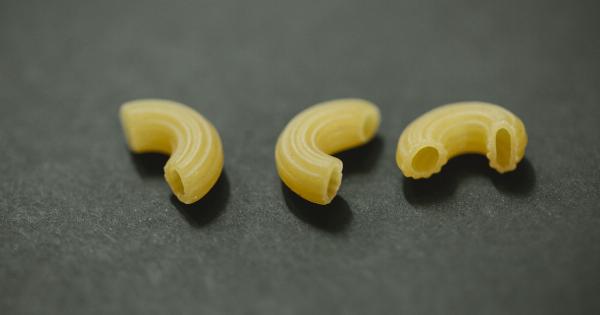Type 2 diabetes is a chronic condition that affects the way your body processes glucose or sugar. In this condition, either your body does not produce enough insulin or it becomes resistant to insulin’s effects.
This leads to an imbalance in blood sugar levels. Nutrition plays a crucial role in managing type 2 diabetes as certain foods can either raise or lower blood sugar levels. Here are three key nutrition tips to help you balance your blood sugar levels and manage type 2 diabetes effectively.
1. Choose Low-Glycemic Index Foods
Glycemic index (GI) measures how quickly a carbohydrate-containing food raises your blood sugar levels. Foods with a high GI cause a rapid spike in blood sugar levels, while those with a low GI lead to a gradual, steady rise in blood sugar.
For individuals with type 2 diabetes, it is important to choose foods with a low GI to prevent sudden spikes in blood sugar levels.
Include foods such as whole grains (brown rice, whole wheat bread), legumes (chickpeas, lentils), non-starchy vegetables (broccoli, spinach), and fruits with a low GI (berries, apples).
These foods provide essential nutrients, fiber, and are digested slowly, helping to maintain stable blood sugar levels. Avoid refined carbohydrates, sugary drinks, and processed snacks with a high GI as they can cause blood sugar imbalances.
2. Create Balanced Meals
Creating balanced meals is essential for managing blood sugar levels in type 2 diabetes. A balanced meal includes a combination of carbohydrates, proteins, and healthy fats.
The right balance of these macronutrients can help slow down the absorption of sugar into the bloodstream, preventing drastic fluctuations in blood sugar levels.
Include lean proteins such as chicken, fish, tofu, or legumes in your meals. Proteins digest slower than carbohydrates, helping to stabilize blood sugar levels. Pair proteins with high-fiber carbohydrates like whole grains, vegetables, and fruits.
Fiber slows down the absorption of sugar, preventing sudden spikes in blood sugar. Add healthy fats such as avocados, nuts, and seeds to your meals in moderate amounts. Healthy fats provide satiety and help slow down digestion, preventing rapid increases in blood sugar.
Additionally, portion control plays a significant role in managing blood sugar levels. Be mindful of serving sizes to avoid overeating, which can result in elevated blood sugar levels.
3. Focus on a Mediterranean-Style Diet
The Mediterranean-style diet has been widely studied and recognized for its positive impact on blood sugar control in individuals with type 2 diabetes.
This diet emphasizes whole, minimally processed foods, rich in fruits, vegetables, whole grains, lean proteins, and healthy fats.
Include a variety of colorful fruits and vegetables, as they are low in calories and high in fiber and antioxidants.
Whole grains such as quinoa, bulgur wheat, and whole grain bread provide essential nutrients and slow-releasing carbohydrates that prevent blood sugar spikes. Choose lean proteins like fish, poultry, and plant-based sources like legumes and tofu. Healthy fats, such as olive oil and avocados, are included in moderation, providing satiety and a variety of health benefits.
Adopting a Mediterranean-style diet can help improve insulin sensitivity, reduce inflammation, and promote better blood sugar control.
It is essential to limit or avoid foods high in refined carbohydrates, added sugars, and unhealthy fats to maximize the benefits of this dietary approach.
Conclusion
Managing blood sugar levels is crucial for individuals with type 2 diabetes, and nutrition plays a fundamental role in achieving this balance.
By choosing low-GI foods, creating balanced meals, and adopting a Mediterranean-style diet, you can effectively manage your blood sugar and improve your overall health.




























